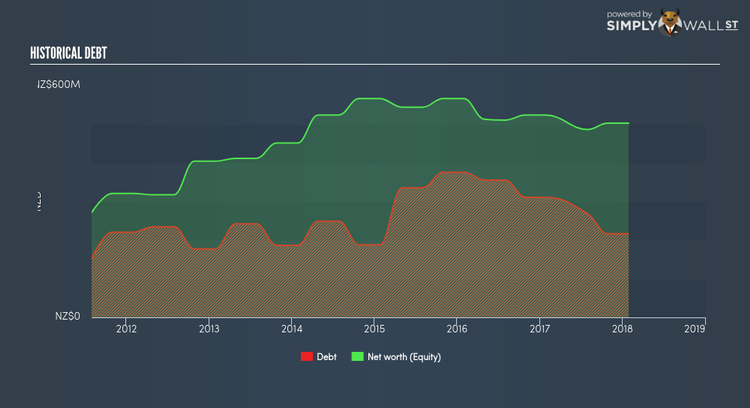Are The Warehouse Group Limited’s (NZE:WHS) Interest Costs Too High?

Investors are always looking for growth in small-cap stocks like The Warehouse Group Limited (NZSE:WHS), with a market cap of NZ$709.66M. However, an important fact which most ignore is: how financially healthy is the business? Companies operating in the Multiline Retail industry facing headwinds from current disruption, even ones that are profitable, are inclined towards being higher risk. Evaluating financial health as part of your investment thesis is essential. Here are a few basic checks that are good enough to have a broad overview of the company’s financial strength. Though, I know these factors are very high-level, so I suggest you dig deeper yourself into WHS here.
Does WHS generate enough cash through operations?
Over the past year, WHS has reduced its debt from NZ$355.58M to NZ$268.67M , which comprises of short- and long-term debt. With this debt payback, the current cash and short-term investment levels stands at NZ$47.49M for investing into the business. Additionally, WHS has produced NZ$128.09M in operating cash flow over the same time period, leading to an operating cash to total debt ratio of 47.67%, meaning that WHS’s operating cash is sufficient to cover its debt. This ratio can also be a sign of operational efficiency as an alternative to return on assets. In WHS’s case, it is able to generate 0.48x cash from its debt capital.
Does WHS’s liquid assets cover its short-term commitments?
With current liabilities at NZ$446.13M, it seems that the business has maintained a safe level of current assets to meet its obligations, with the current ratio last standing at 1.55x. Generally, for Multiline Retail companies, this is a reasonable ratio since there’s sufficient cash cushion without leaving too much capital idle or in low-earning investments.
Does WHS face the risk of succumbing to its debt-load?
With debt reaching 43.09% of equity, WHS may be thought of as relatively highly levered. This is not uncommon for a small-cap company given that debt tends to be lower-cost and at times, more accessible. No matter how high the company’s debt, if it can easily cover the interest payments, it’s considered to be efficient with its use of excess leverage. A company generating earnings after interest and tax at least three times its net interest payments is considered financially sound. In WHS’s case, the ratio of 8.48x suggests that interest is appropriately covered, which means that debtors may be willing to loan the company more money, giving WHS ample headroom to grow its debt facilities.
Next Steps:
Although WHS’s debt level is towards the higher end of the spectrum, its cash flow coverage seems adequate to meet obligations which means its debt is being efficiently utilised. This may mean this is an optimal capital structure for the business, given that it is also meeting its short-term commitment. I admit this is a fairly basic analysis for WHS’s financial health. Other important fundamentals need to be considered alongside. I suggest you continue to research Warehouse Group to get a better picture of the small-cap by looking at:
Future Outlook: What are well-informed industry analysts predicting for WHS’s future growth? Take a look at our free research report of analyst consensus for WHS’s outlook.
Valuation: What is WHS worth today? Is the stock undervalued, even when its growth outlook is factored into its intrinsic value? The intrinsic value infographic in our free research report helps visualize whether WHS is currently mispriced by the market.
Other High-Performing Stocks: Are there other stocks that provide better prospects with proven track records? Explore our free list of these great stocks here.
To help readers see pass the short term volatility of the financial market, we aim to bring you a long-term focused research analysis purely driven by fundamental data. Note that our analysis does not factor in the latest price sensitive company announcements.
The author is an independent contributor and at the time of publication had no position in the stocks mentioned.

 Yahoo Finance
Yahoo Finance 
